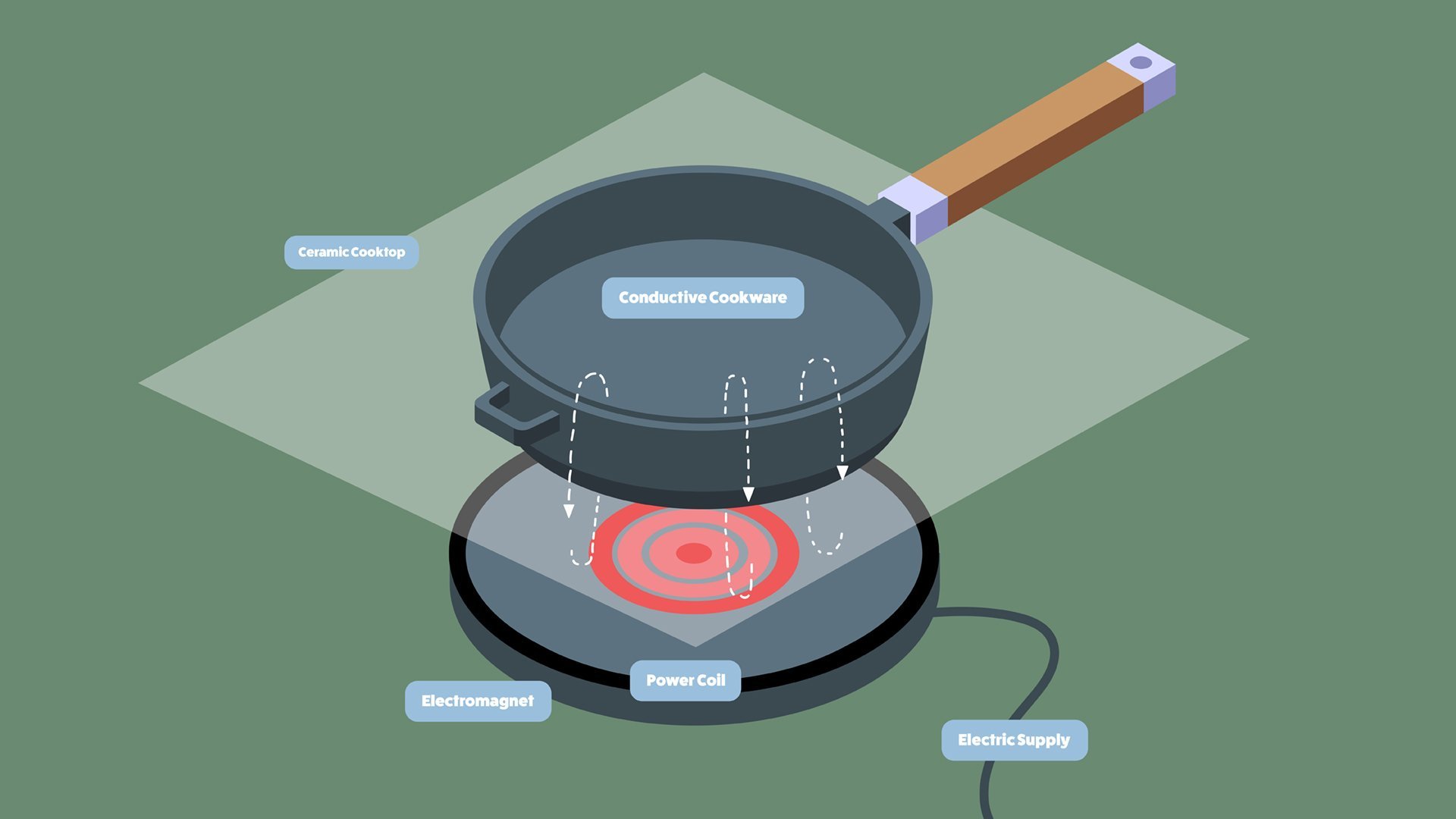INDUCTION > GAS OR ELECTRIC STOVES
FROM OPEN FIRE TO GAS RANGES (AND BEYOND!)
From cooking on open fires, to wood stoves, to natural gas and electric ranges, we humans have dramatically improved the precision and efficiency of our cooking. But there are big issues with the most popular stoves today (natural gas); new evidence suggests that gas ranges are more dangerous than we originally knew. They release dangerous pollution inside our homes. And electric ranges aren’t much better. As you might have experienced, electric ranges are slow to heat, slow to cool, and they are hot to the touch for a while after you’ve turned them off. (And both types of stoves are difficult to clean!)
THERE’S A BETTER WAY
Induction stoves solve all these problems, all while saving energy and minimizing the impact on the environment.
Air quality: Induction stoves don’t emit any harmful pollutants into our indoor air.
Precision and speed: they heat up very quickly, and the temperature is highly accurate.
Quick to cool: Induction stoves are quick to cool, since they don’t get very hot in the first place! (See more about how induction works below.)
Easy to clean: they look like a flat cooktop, but because they don’t get as hot, food doesn’t get caked on as easily as it does on an electric cooktop.
Saving energy: the magic of induction uses much less power than a typical electric appliance, and they don’t use harmful gasses to function.
HOW INDUCTION COOKING WORKS
Induction stoves work by running an electric current through a coil, which generates a fluctuating magnetic field. This field doesn’t create heat until it touches your ferrous (iron) cookware. Once you put an iron pot or pan on the stove, the magnetic field induces many smaller electric currents in the cookware. And since iron is a poor conductor of electricity, these smaller “eddy” currents produce heat in your pot or pan.
This technology is fundamentally different from the conduction used by old-fashioned electric stoves; you’re not heating the cooktop to then heat the pot or pan. Rather, you’re inducing a current that will only heat your iron cookware. A small amount of heat does conduct back down to the cooktop from the pan, but it dissipates much more quickly than with an electric stove.
IRON POTS & PANS
Before you start cooking, make sure you have the right equipment. In order for the induction technology to work, your pots and pans need to be made of a magnetic material like iron or steel. Since induction heating happens when iron atoms dance around, there needs to be enough iron in your cookware for the heat to build up.
READY TO TRY IT OUT?
There’s a few next steps you can take:
If you’re not ready to swap out your whole oven and range, snag a beginner single-burner countertop induction stove. Don’t forget to grab some iron cookware while you’re at it
Join the waitlist at Cooper or Impulse for their battery induction stove (another blog to come about this awesome technology in the future!)
Start shopping for a full induction stove range (note: I do not receive a commission on these products)
Research IRA Rebates. For a brief primer on the technology of induction cooking, and the basics on the IRA rebates, check out section 2 of our other blog here


